Warm weather at the end of March in the southern regions can contribute to the early awakening of harmful insects: various types of aphids, moths, honey beetles, flower beetles, and scale insects. Therefore, treatment of the garden against diseases and pests should begin in early spring.
| Content:
|
Tilling the garden in early spring
In early March, check and adjust the strapping on young trees: the bright spring sun can cause bark burns. Stone fruits and apple trees are especially affected:
- Melba
- Welsey
- Lobo
|
If necessary, clean and treat the trunks to preserve them longer and also to destroy pests hibernating under the loose bark. |
Useful for boles: “warm bath”: spraying with a hot solution copper sulfate (100 g per 10 liters of water) followed by whitewashing with lime (2 kg per 10 liters of water) or special paint.
Warm, sunny March is dangerous for stone fruits. They emerge from deep winter dormancy faster, and the buds may freeze. You can protect them by spraying the crown slaked lime suspension (200-300 g per 10 liters of water).
Begin early spring spraying of trees against wintering stages of pests and diseases when long-term (for 3-5 days) positive (plus 4-5 degrees) average daily temperatures occur.
At the end of March, it is useful to cultivate the soil under berry bushes extrasol (1 tablespoon per 10 liters of water). This makes her healthier.
If the spring is long, cold and also wet, you need to protect stone fruits (cherries, plums, apricots) from moniliosis: when the buds swell, treat the trees in the garden 3% Bordeaux mixture, and on young leaves (in April) - zircon.
Apple and pear trees that are not resistant to scab must be treated with fungicides before buds open.
|
Some gardeners spray currants and gooseberries with hot water before buds open. |
The temperature of the water falling on the plants should be 60-65 degrees, and on strawberries - 60. Both raspberries and honeysuckle can be treated in this way.
April: what preparations to treat gardens before flowering
There will be no good harvest if the plants are not promptly treated against pests and diseases.
Trees in the garden, the trunks of which are populated with lichens and mosses, can be sprayed with iron sulfate before the buds open:
- pome seeds - 500 g per 10 liters of water
- stone fruits - 300 g.
In April, at a stable air temperature of at least plus 5 degrees, once every 3 years, trees are sprayed - washed to destroy the wintering stock of eggs of aphids, copperheads, scale insects, scab, spots, powdery mildew, cherry flies, coccomycosis, clasterosporiasis emulsion of the drug N30
- pome seeds 500 g per 10 liters of water
- stone fruits - 300 g.
Against pathogens of fungal diseases, “blue” spraying along the “green cone” is used - 300 g of copper sulfate + 400 g of lime per 10 liters of water.
Garden strawberries
On a strawberry plot, after cleaning it, the bushes and the soil around them are sprayed before the leaves grow 1% solution of Bordeaux mixture (100 g of copper sulfate + 150 g of quicklime per 10 liters of water). This is prevention against fungal diseases.
|
Strawberries are very responsive to early loosening. Every day of delay is a loss of harvest. |
Against strawberry mite you can spray strawberries with a suspension when the leaves grow colloidal sulfur (50 g per 10 liters of water).
With the beginning of active life of plants, their pests become more active in April. At the beginning of bud bursting, larvae of aphids, apple honey beetle, caterpillars of leaf rollers, moths, and moths hatch on the branches, and apple flower beetle beetles emerge from their winter shelters.
Therefore, April is a very important period for treating the garden against pests. You need to manage everything from the swelling of the buds to the start of flowering.
Apple tree protection
To protect the apple tree from the flower beetle, place trapping belts in the middle or upper part of the trunk at the very beginning of April. The belt must be covered with a film visor on top. Shake weevils onto the litter (3-4 times before the buds appear).
During the “green cone” phase, many pests are relatively accessible to insecticide treatments. You can spray trees and berry bushes with a solution fufanona-nova.
|
Spraying apple trees over a “green cone” with copper sulfate |
During the budding period, a less concentrated solution is sprayed against fungal diseases:
1% Bordeaux mixture (100 g of copper sulfate and quicklime per 10 liters of water).
Trees are treated with medications against scab, clusterosporiasis, and red spot. Horus or Raek.
Copper-containing preparations are ineffective against powdery mildew on apple and currant trees. They replace it with colloidal sulfur (but not on gooseberries).
How to spray pears in April
In recent years, pears have been suffering from gall mites (dark bumps on the leaves along the central vein) and from rust (there are orange growths on the underside of the leaves).
|
This is what pear leaves look like when they are affected by rust. |
During bud break, trees should be sprayed along the “green cone” colloidal sulfur (100 g per 10 liters of water).
Currant processing
Spray currants, especially red and white ones, which are damaged annually by red gall aphids (leaves with bulges), before flowering. fufanona-nova or kinmiksa. Add to solution topaz (2 ml per 10 liters of water) or chorus (according to instructions) - from fungal diseases.
|
Red gall aphid on currants |
Raspberries
Spray raspberries against pests on the budding buds with the same insecticides with the addition extrasol (10 ml per 10 liters of water) or other biostimulator of plant growth and development.
May: spring treatment of trees against diseases and pests
When the garden blooms, worry about the harvest does not leave the gardener. Not only late spring frosts threaten the harvest. Both rain and fog are dangerous. Cold weather during the flowering period creates conditions for flowers to become infected with monilial blight. It affects not only susceptible varieties of apple trees, but also stone fruits, especially apricots, sweet cherries, and felt cherries.
|
The first sign of moniliosis is browning and drying of flowers. Such flowers remain in the crown for more than a year, constantly spreading the infection. |
Horus is effective against moniliosis in the first two days of flowering and at the very end of tree flowering.
Except moniliosis, some varieties apple and pear trees are affected by scab in the spring. If gardeners managed to spray the trees in the “green cone” phase and along the “pink bud” with preparations Horus or Rayok, their trees are protected from many fungal diseases, incl. from scab, clusterosporiasis, red spot.
|
The Renet Simirenko apple tree and the Forest Beauty pear tree suffer from scab more often than other trees. |
During flowering, it is recommended instead of chemical means of protection. apply biological (Lepidocide). Spray early in the morning and late in the evening.
The best way to spray gardens after flowering
After flowering, it is necessary to treat plum trees and large-fruited cherry plum trees along the developing ovaries from thick stalks, aphids and spots. Preparations:
- Kinmiks (4 ml) or
- Fufanon-Nova (13 ml) + HOM (30-40 ml).
The same spraying on the ovaries will protect cherries from aphids, and in wet weather (separately) from fungal diseases (including coccomycosis).
After flowering, spray the peach against leaf curl and pests with a “cocktail” made up of Skora (2 ml) + Fufanon-Nova (13 ml) + Extrasol (10 ml).
During the period of bud release, it is useful to cover the soil under fruit trees, currants, gooseberries with roofing material, film, the edges of which are sprinkled with earth. Remove shelters after flowering. This measure is aimed against pests living in the soil: beetle larvae, beetles, gooseberry moths, sawflies, glass beetles.
|
The shelter will prevent pests from emerging from the soil and damaging the buds in the tree crown. |
In early May, red gall aphids develop on red currants (red swellings on the leaves). Treat the bushes twice Fufanon-Nova or Kinmiks. Add fungicide to the solution (Abiga-Pik - 40 g or HOM - 40 g per 10 liters of water).
Old varieties of gooseberries and blackcurrants may develop American powdery mildew (a white coating on the ends of shoots and berries). Spray Topaz (2 ml). Repeat after two weeks. You can replace the fungicide with soda ash (50 g) with the addition of soap (50 g).
Don’t forget to add Novosil or Extrasol to the solution. First, dilute the soap, then add soda dissolved in a small amount of water, then Novosil.
|
Raspberry shoots affected by raspberry gall midge |
When the raspberries bloom, the raspberry gall midge emerges from the winter hut, laying eggs in the young shoots. This is where galls (bulges) develop on the shoot. As a result, by autumn the shoot easily breaks off. Use Kinmiks with the addition of Novosil or Extrasol a to treat green shoots.
Important! After flowering, do not apply pure nitrogen fertilizers. They will cause the appearance of aphids and other sucking pests, as well as shedding of the ovaries.
June: how to treat gardens against harmful insects in summer
Warm and possibly humid June is very favorable for the proliferation of pests and the spread of diseases in the garden.
Apple trees
The apple sawfly and codling moth damage the set fruits. Collect fallen fruits immediately every evening, before the pests go into the soil or into the crown of the tree.
|
Regularly remove carrion from under trees. |
Remove cobweb moth nests.
The second spraying against codling moth should be carried out 15-18 days after the first (late May - early June). Subsequent ones - with an interval of 15-16 days. Preparations:
- Fufanon-nova
- Alioth
- Alatar.
It is safer for your health and beneficial insects to use biological products in the fight against codling moth:
- Lepidocide
- Fitoverm
- Dendrobacillin
Three treatments against each generation (with an interval of 6-7 days).
Pears in June
|
On a pear, the codling moth develops in one generation. Deep dents or dark spots appear where the caterpillars have embedded themselves. |
In the third decade of June, it is necessary to treat summer varieties of pears against the pear moth. The first time summer varieties are sprayed at the beginning of summer butterflies, 35-40 days after the pear blossoms; the second time - 12 days after the first. Organophosphorus preparations are used for garden treatment
- Fufanon-nova
- Iskra M
- Aktara
- Alioth
Autumn and winter varieties are sprayed a third time, combining an insecticide (Lepidotsid, Fitoverm, Alatar, Kinmiks) and a fungicide against powdery mildew, scab (Raek, Topaz) + 50 g of calcium nitrate for better storage of late varieties.
Plums in June
On the plum tree, 15-20 days after the end of flowering, plum moth caterpillars hatch.
They feed on the pulp of fruits and pollute them with their excrement. Gum leaks from wounds caused by the pest. Prematurely damaged fruits ripen and fall off.
|
Plum moth |
At the end of May - beginning of June, the first spraying of early varieties of plum, cherry plum, and sloe is carried out. After 15 days - a second spraying against the second generation.
The drugs are the same as those used against the pear moth.
It is necessary to systematically collect and destroy carrion, lightly shake off damaged fruits from the tree, loosen the soil under the trees in the summer and dig in the fall.
To protect against pests, use trapping belts
There is more benefit from belts if the standards trees without cracks. To do this, spread film or paper around mature fruit trees. Using a wooden scraper and then a wire brush, carefully clean the trunk and thick skeletal branches of dead parts of the bark. Burn the trash.
If the cracks are deep and cut into living tissue, cover them with clay. After this, place trapping belts 35-40 cm wide on the trees so that there are no gaps between them and the bark of the trunk. In the middle part, tie tightly with 2-3 turns of twine. The edges of the belts should not lag behind the standard.
|
To prevent poisons from being washed away by rain, cover the belts with film and tie them tightly with twine. |
Belts impregnated with insecticide do not need to be inspected frequently: caterpillars caught in them quickly die.
Cherries in June
In June, cherry aphids, cherry flies, and cherry elephants are harmful.
The cherry fly damages mid- and late-ripening varieties of cherries (black spots on the fruit, often rotting).
Due to the long period of fly emergence in June, trees need to be sprayed every 7-10 days. Preparations:
- Fufanon-nova (11.5 ml per 10 l)
- Kinmiks
Remove the carrion under the cherries and cherries before the larvae go into the soil.
|
Cherry aphids curl the leaves at the tops of the shoots, the leaves dry out, and the shoots stop growing.During the year, aphids can produce 12 generations. |
It is important not to miss the deadline for the first spraying against cherry aphids and to carry it out when single winged individuals - female dispersers - are detected.
Belated spraying, carried out already when there is a massive infestation of aphids and leaves curling on the tops of the shoots, does not give a high effect.
Berry bushes
Chemical control agents are not used on berry bushes after flowering. Against sphere library, use soda ash with soap (40 g each), ash lye (1/4 bucket of ash is boiled in a bucket of water for 2 hours, filtered, add 40 g of soap).
|
Strawberry bushes affected by nematodes (thickened, shortened, curved leaf petioles and peduncles, squat, fleshy bushes) should be removed from the plantation and destroyed. |
Strawberries cannot be planted in contaminated areas for two years.
Protecting trees from diseases in June
Currants, gooseberries, some varieties of apple trees (Jonathan, for example) can be sprinkled with flour as early as June powdery mildew. To prevent it from spreading, cut off damaged parts of the branches or spray the crowns with infusion of mullein, rotted hay or whey.
|
Powdery mildew on currant shoots |
Scab is very insidious. After flowering, apple and pear trees need to be sprayed Thiovit jet (30-40 g per 10 liters of water) and repeat subsequent treatments at intervals of 2 weeks.
Copper preparations in summer can cause netting on fruits and leaf burns.
On trees affected by moniliosis, you need to cut out all the dead branches, including the healthy part, and treat them again against fungal diseases (coccomycosis, clusterosporiasis) with the drug Abiga-pik or Horus. Repeat the treatment after 10 days.
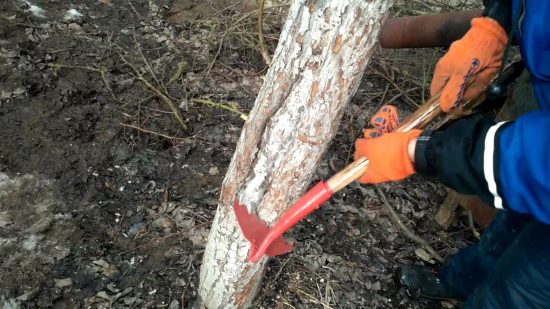
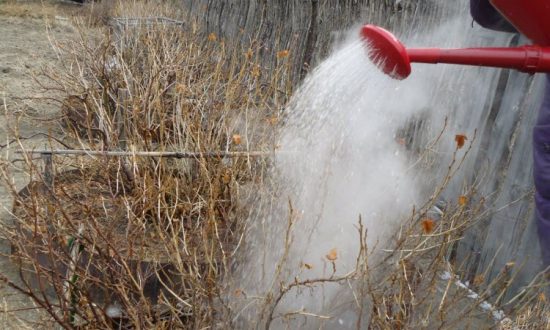
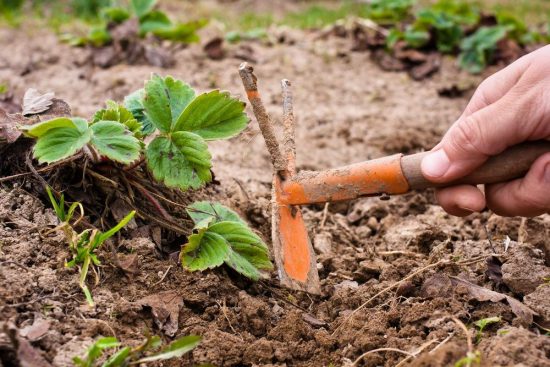
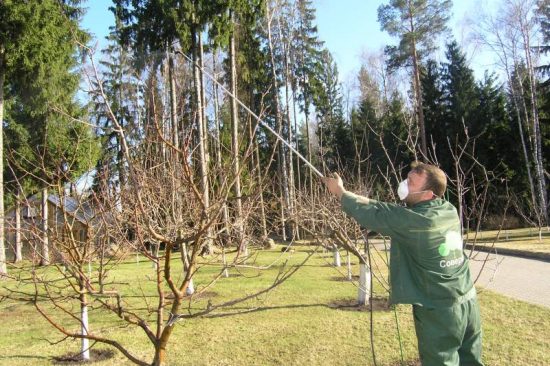
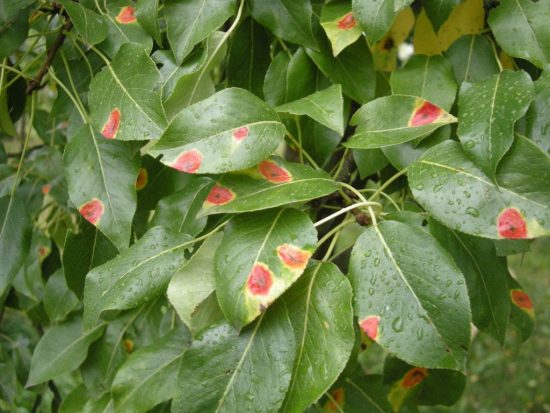
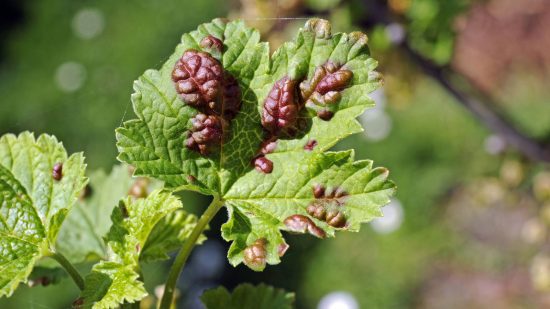
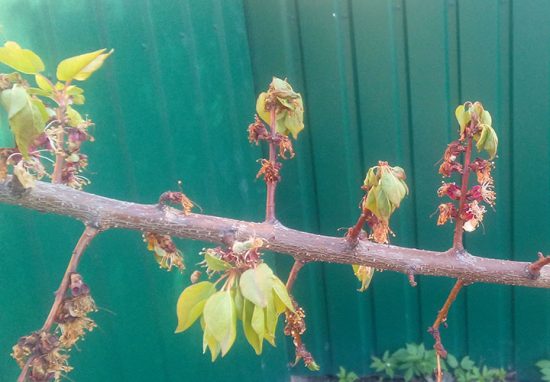
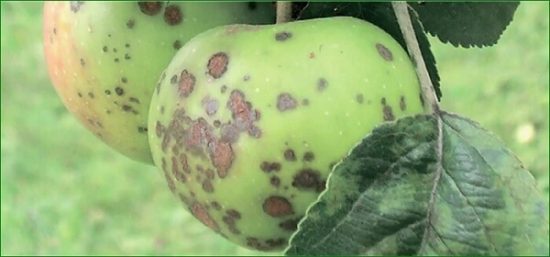
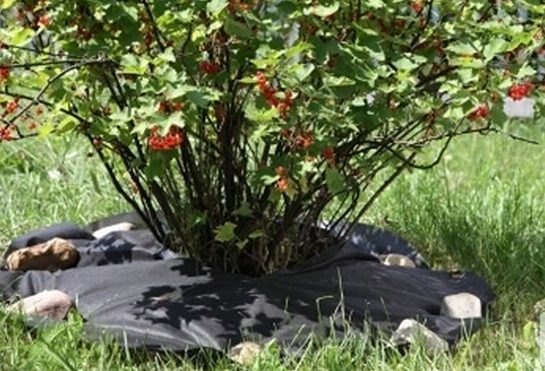
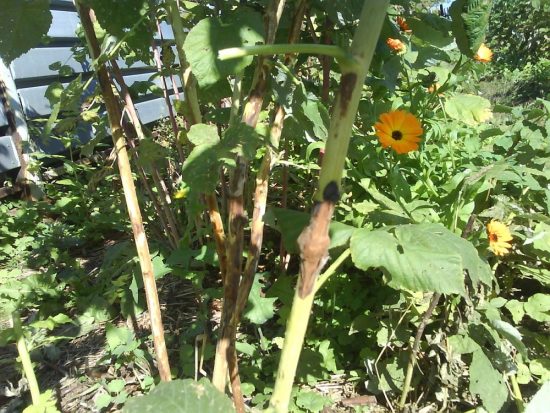
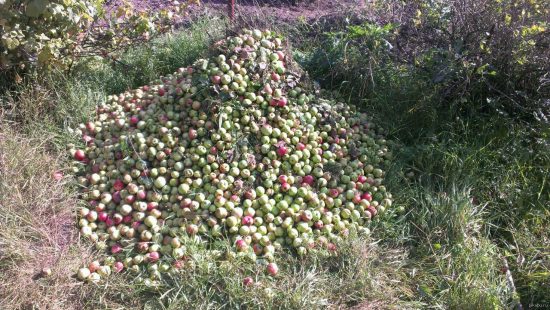
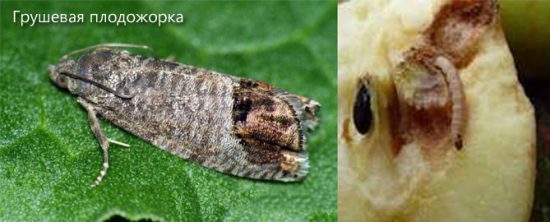
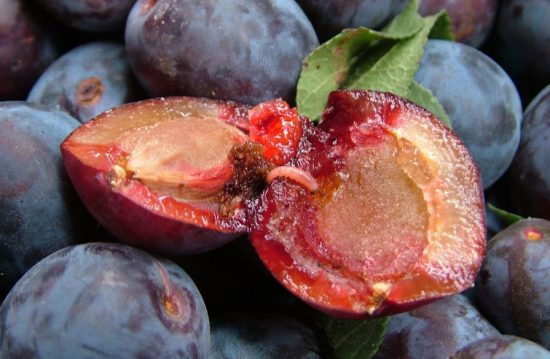
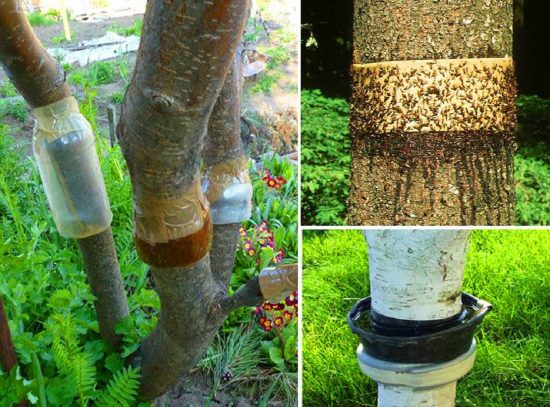
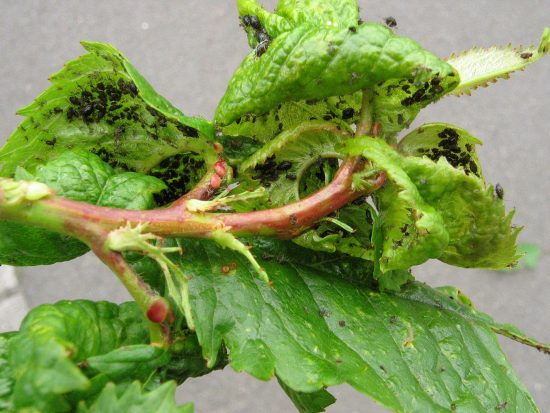
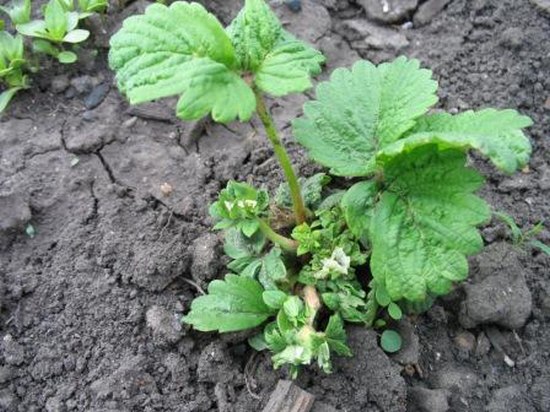
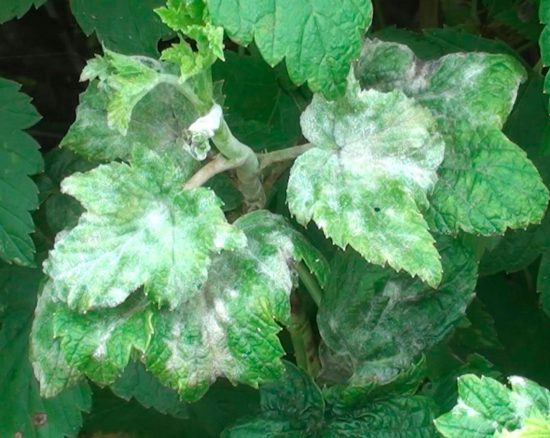

 (12 ratings, average: 4,67 out of 5)
(12 ratings, average: 4,67 out of 5) CUCUMBERS NEVER GET SICK, I'VE BEEN USING ONLY THIS FOR 40 YEARS! I SHARE A SECRET WITH YOU, CUCUMBERS ARE LIKE THE PICTURE!
CUCUMBERS NEVER GET SICK, I'VE BEEN USING ONLY THIS FOR 40 YEARS! I SHARE A SECRET WITH YOU, CUCUMBERS ARE LIKE THE PICTURE! You can dig a bucket of potatoes from each bush. Do you think these are fairy tales? Watch the video
You can dig a bucket of potatoes from each bush. Do you think these are fairy tales? Watch the video
 How our fellow gardeners work in Korea. There is a lot to learn and just fun to watch.
How our fellow gardeners work in Korea. There is a lot to learn and just fun to watch. Eye trainer. The author claims that with daily viewing, vision is restored. They don't charge money for views.
Eye trainer. The author claims that with daily viewing, vision is restored. They don't charge money for views. A 3-ingredient cake recipe in 30 minutes is better than Napoleon. Simple and very tasty.
A 3-ingredient cake recipe in 30 minutes is better than Napoleon. Simple and very tasty. Therapeutic exercises for cervical osteochondrosis. A complete set of exercises.
Therapeutic exercises for cervical osteochondrosis. A complete set of exercises. Which indoor plants match your zodiac sign?
Which indoor plants match your zodiac sign? What about them? Excursion to German dachas.
What about them? Excursion to German dachas.
Thank you, very useful and timely article.
And thank you for your kind words